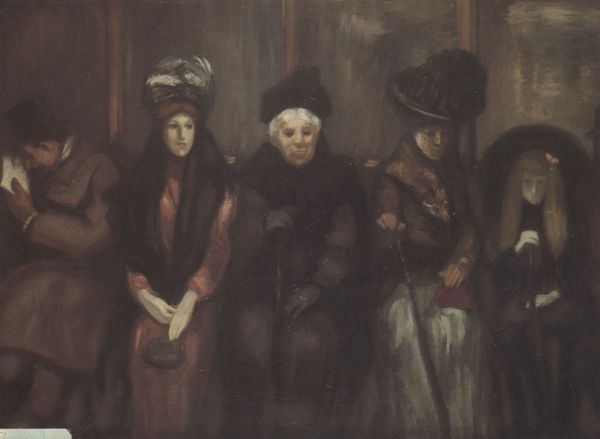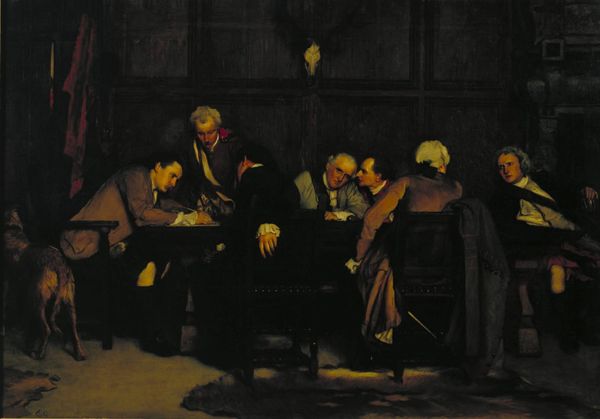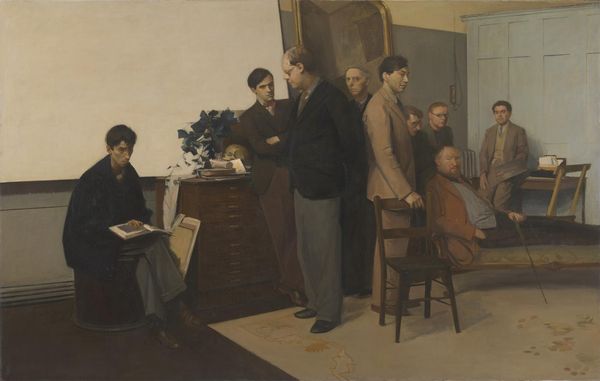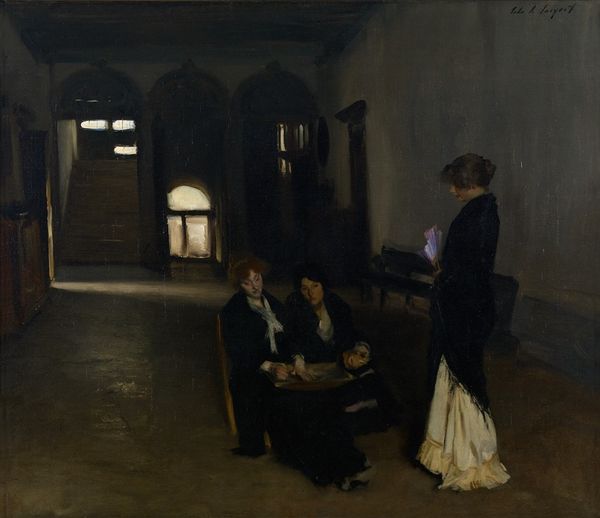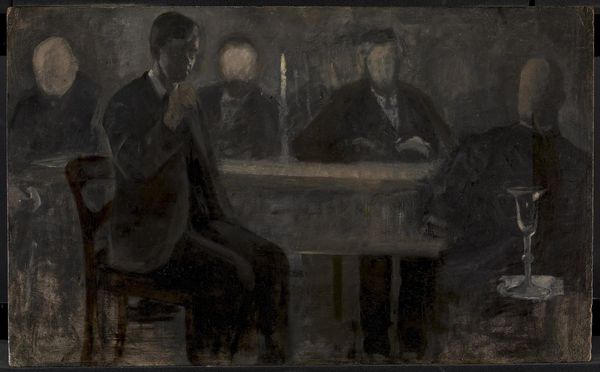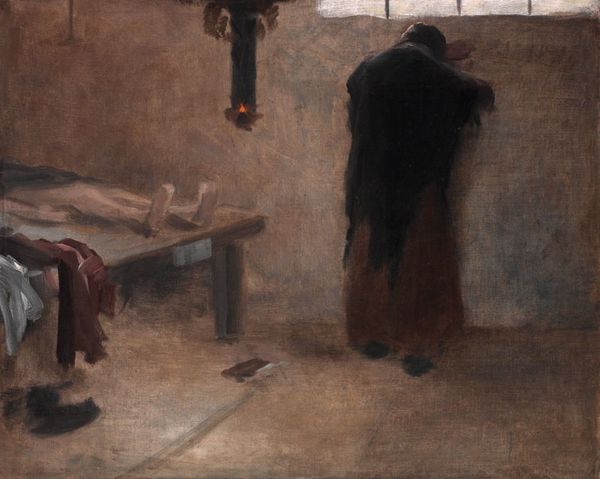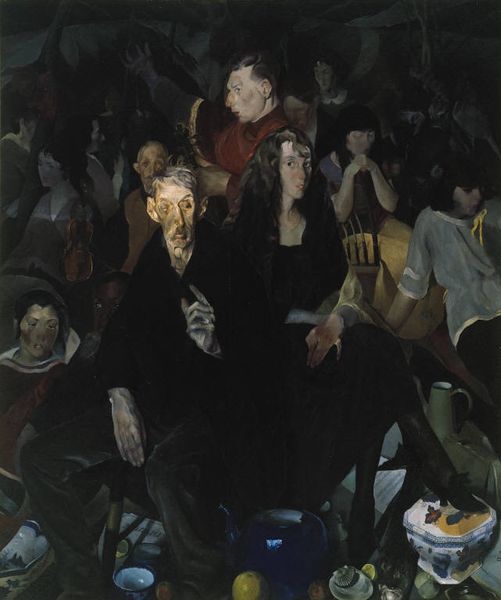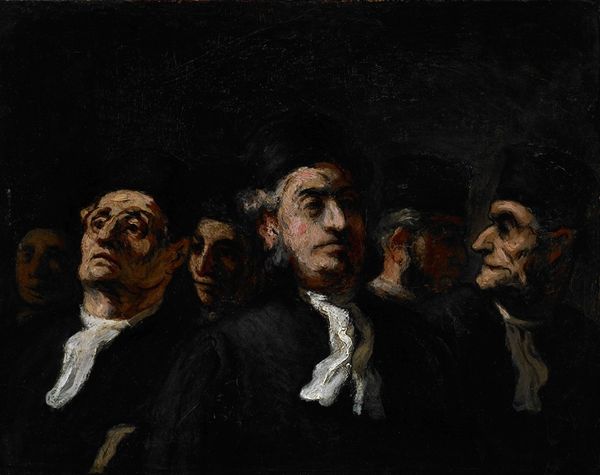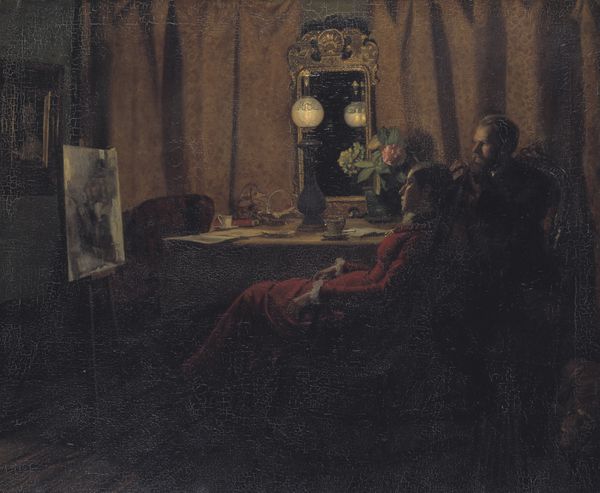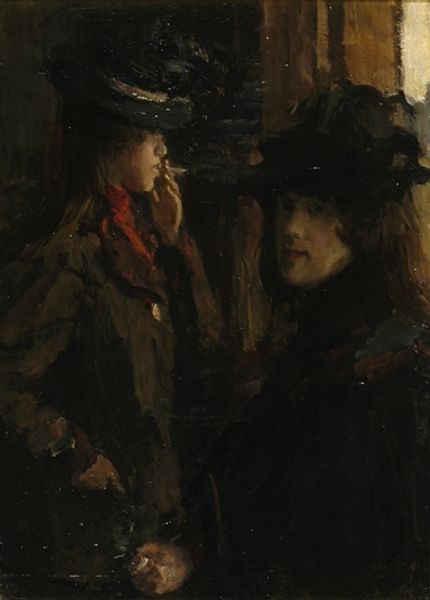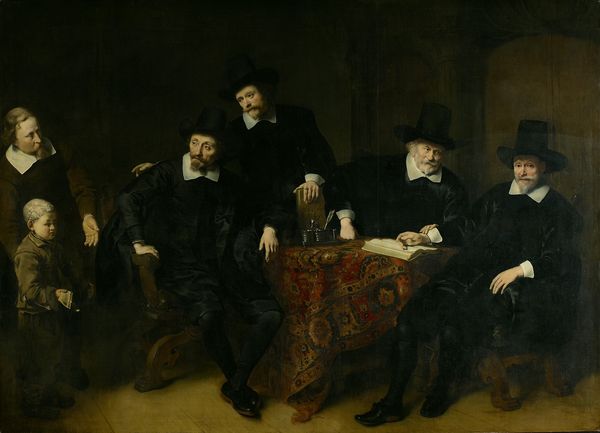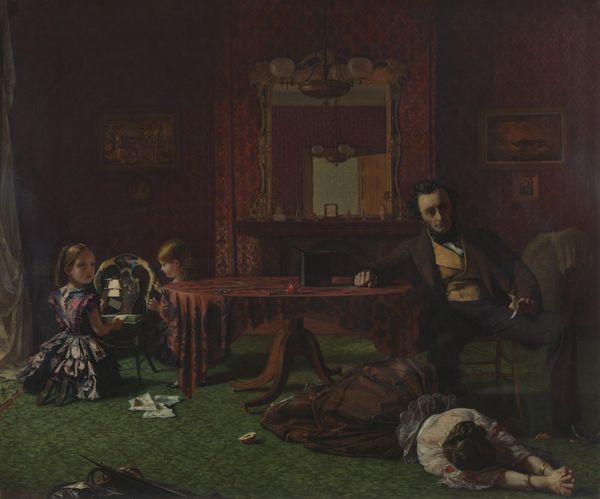
Dimensions: 131 cm (height) x 184.5 cm (width) (Netto)
Harald Slott-Møller painted The Poor: The Waiting Room of Death with oil on canvas, using traditional materials to depict a starkly modern subject. The sheer labor involved in a canvas this size is significant; grinding pigments, priming the surface, layering tones to achieve such somber effects. Note how the artist used these inherent material qualities – opacity, texture, weight – to convey the palpable weight of poverty. The thick darkness almost seems to press down on these figures. The painting’s cultural significance lies in its unflinching portrayal of social inequality. Slott-Møller engages with a skilled tradition of realist painting to bring forth the issues of labor and class, portraying people worn down by work in a capitalist society. He asks us to consider not just what we see, but the immense unseen effort of survival that it represents. Ultimately, this painting reminds us that materials, making, and social context are inseparable. To truly understand this artwork, we must look beyond traditional notions of fine art and consider the wider world of human experience it reflects.
Comments
statensmuseumforkunst almost 2 years ago
⋮
A number of figures sit in a dark room, waiting. Destitute and malnourished, none of them conform to current beauty ideals. But this is no ordinary waiting room: the figure in the doorway was originally not a doctor, but a skeleton. Slott-Møller wished to illustrate the saying “Death is the poor man’s only physician”, the enclosed space symbolising the limited options of the poor. The painting was a contribution to the ongoing discussion about social injustice in the overcrowded city of Copenhagen. The painting was harshly criticised when exhibited in 1888. Conservative critics attacked the social message, but the skeleton in particular caused consternation. The figure has since darkened – or may even have been painted over by the artist. But you can still dimly see its contours in the doorway.
Join the conversation
Join millions of artists and users on Artera today and experience the ultimate creative platform.
